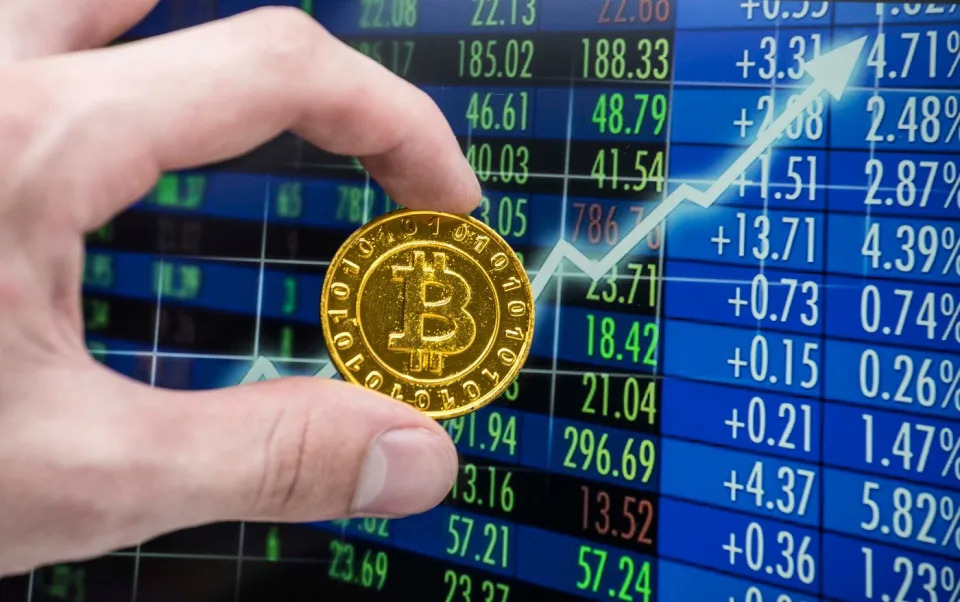So far in 2024, Bitcoin (CRYPTO: BTC) is up a resounding 47%. So it might sound a bit strange to be talking about a Bitcoin bounce-back in the second half of the year.
But here's the thing -- ever since Bitcoin hit a new all-time high of $73,750 back in March, the world's most popular cryptocurrency has largely traded sideways or down. At one point, Bitcoin even fell below the $54,000 mark, and some feared that it might dip below $50,000. But there are three very good reasons why Bitcoin could regain its bullish momentum in the coming months.
The Bitcoin halving
When the Bitcoin halving took place on April 19, many crypto investors assumed that the price of Bitcoin would immediately skyrocket. But that simply has not been the case. If anything, the opposite has been true. As a result, some people have entirely given up on the expected halving boost.
But I think that would be a mistake. Consider, for example, what happened during the previous Bitcoin halving cycle in 2020. It took nearly five months before the upward-bound impact of the halving kicked in, and that's when Bitcoin went parabolic. It skyrocketed from a price of $10,000 in October 2020 to a $65,000 in April 2021. While past performance is no guarantee of future performance, there's certainly still time for the Bitcoin halving to present a similar pattern again.
The spot Bitcoin ETFs
It's not time to give up on the price-lifting impact of spot Bitcoin ETFs , either. In the first few months of the year, the new exchange-traded funds (ETFs) were all the rage. But then came a cooling-off period in May and June, and many assumed that massive investor capital inflows were coming to an end.

But that simply has not been the case. If you take a look at investor inflows during the month of July, you can see this clearly. Inflows were positive for four straight weeks, and show no signs of stopping in August.
In fact, there's reason to think that the next round of institutional investors -- led by pension funds, endowments, and sovereign wealth funds -- are about to pick up the slack. If they do, then a lasting comeback could be in the cards, as this new source of money flows into Bitcoin.
New political momentum
Finally, there's the issue of political momentum. There is growing support from top lawmakers and political candidates for Bitcoin, and that should be music to the ears of crypto investors. The best example is former President Donald Trump, a former Bitcoin skeptic who is now transforming himself into a Bitcoin-supporter candidate. At the Bitcoin 2024 event in Nashville at the end of July, he even went so far as to suggest the creation of a strategic Bitcoin reserve for the U.S. government.
And Trump is hardly alone among high-profile politicians. Independent politician Robert F. Kennedy, Jr. has also emerged as a Bitcoin supporter, and U.S. Senator Cynthia Lummis (R-Wyoming) has proposed a new plan for the U.S. Treasury to acquire 1 million Bitcoins, which would be worth nearly $66 billion at today's prices. Do you think that won't help to push up the price of Bitcoin?
But just keep in mind that public sentiment about crypto can be very fickle. All it takes is one bad news headline, and a lot of positive support in Washington, D.C. could dry up overnight. And even the best-intentioned campaign promises can come to nothing if a politically divided nation can't come to an agreement on anything.
How high can Bitcoin go?
That being said, there's reason to think that Bitcoin could have a decisive bounce-back in the second half of the year. Investment firm Bernstein, for example, is holding to its prediction that Bitcoin could hit $200,000 sometime in 2025.
That price target might strike some as being overly optimistic, but many positive factors are lining up for Bitcoin. The halving boost still has time to go into effect, investor inflows continue into the new spot Bitcoin ETFs, and political momentum is building. As long as all of those catalysts remain relevant, Bitcoin most likely has nowhere to go but up.
Before you buy stock in Bitcoin, consider this:





